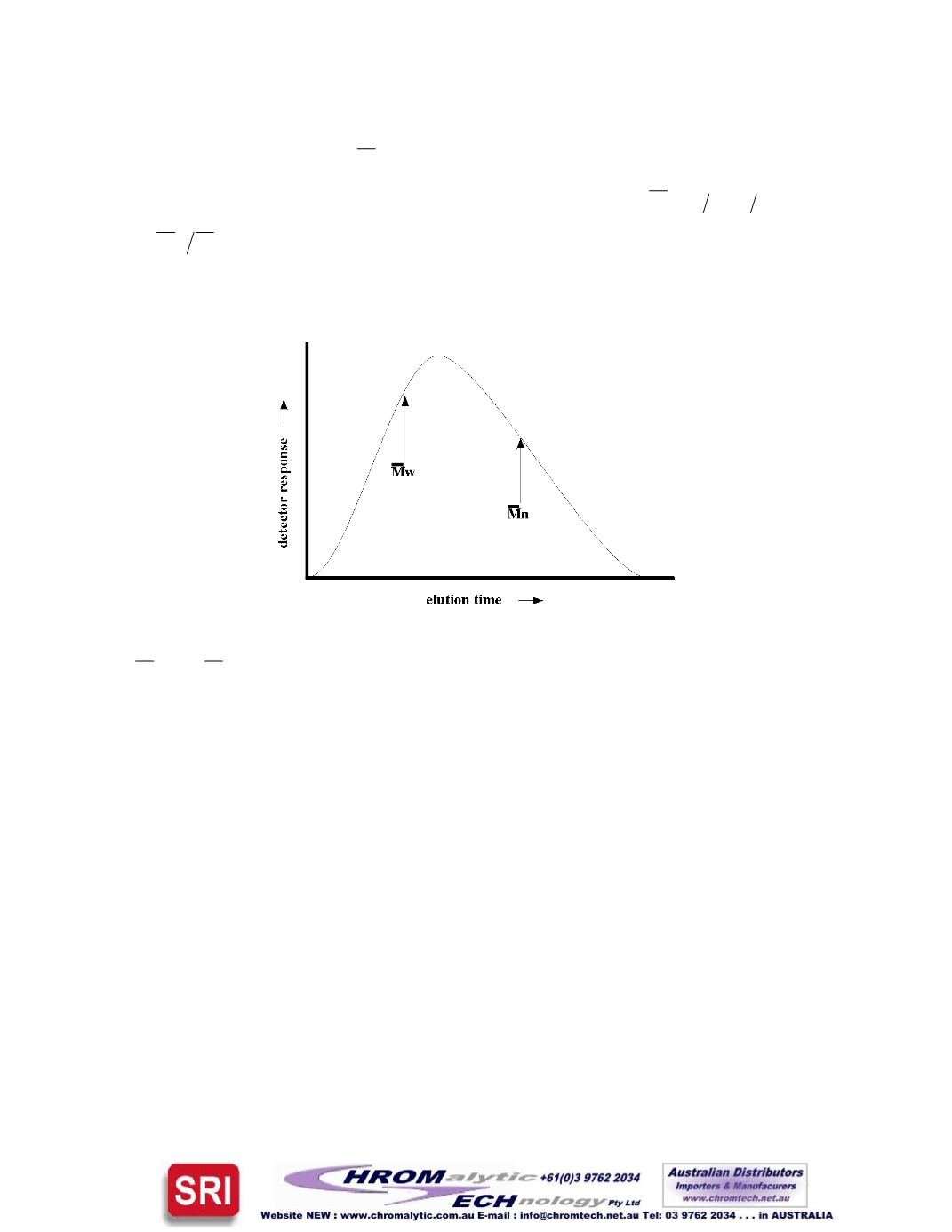
defined as a sum of the products of the molecular weight of each fraction multiplied by its
weight fraction,
i
w
. That is:
i
i
w
Mw M
å=
. Additionally, it can be shown that the number
average molecular weight, in terms of weight fraction, is equal to:
)
( 1
i
i
n
Mw
M
å=
. The
ratio
n
w
MM
is known as the polydispersity or polydispersity index (PDI). The PDI is often
used as a measure of the breadth of the molecular weight distribution. Polymers that are
monodisperse (i.e. all chains have the samemolecularweight)would have a PDI of 1.
A typical polydisperse polymer molecular weight distribution showing the approximate locations
of
n
M
and
w
M
.
Using PeakSimple 2.09, polymers p000604 and p000606 were integrated (using the GPC
event file) and the results saved in ASCII files. The ASCII files were imported into Excel and
the corresponding sample times were added as a third column of data starting at time equal to
zero. Only slice and time data corresponding to the major peak of interest were retained
(columns A,B and J,K respectively). For each time slice, a corresponding molecular weight,
i
M
, was calculated using the analytical equation fitted to the calibration curve (columns C and
L, respectively). Note that extrapolation of a fewminutes outside of the last standard (MW =
1,000,000) is usually not a problem. Furthermore, the refractive index response of the detector is
proportional to the weight concentration of eluting polymer, independent of molecular weight.
Thus, theweight fraction,
i
w
, of polymer in any slice is equal to the detector voltage response or
height (baseline subtracted) divided by the sum of detector voltage responses for each polymer


